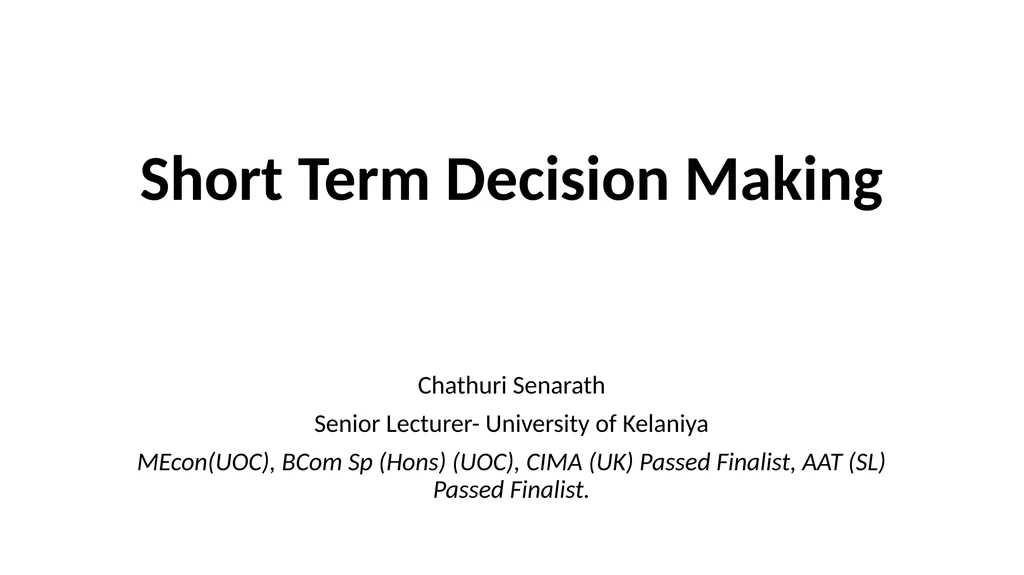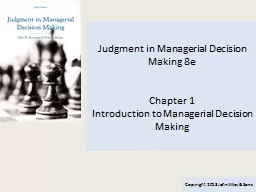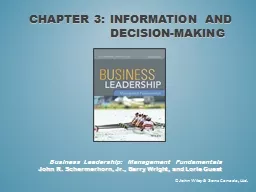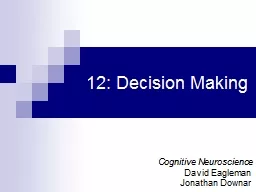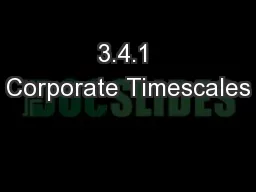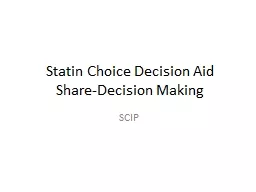Short Term Decision Making Chathuri Senarath
Author : giovanna-bartolotta | Published Date : 2025-06-23
Description: Short Term Decision Making Chathuri Senarath Senior Lecturer University of Kelaniya MEconUOC BCom Sp Hons UOC CIMA UK Passed Finalist AAT SL Passed Finalist Introduction If any business is to be successful it goes without
Presentation Embed Code
Download Presentation
Download
Presentation The PPT/PDF document
"Short Term Decision Making Chathuri Senarath" is the property of its rightful owner.
Permission is granted to download and print the materials on this website for personal, non-commercial use only,
and to display it on your personal computer provided you do not modify the materials and that you retain all
copyright notices contained in the materials. By downloading content from our website, you accept the terms of
this agreement.
Transcript:Short Term Decision Making Chathuri Senarath:
Short Term Decision Making Chathuri Senarath Senior Lecturer- University of Kelaniya MEcon(UOC), BCom Sp (Hons) (UOC), CIMA (UK) Passed Finalist, AAT (SL) Passed Finalist. Introduction If any business is to be successful, it goes without saying that it is critical to make the right decisions. While long‑term decisions are obviously important – by virtue of the fact that they often involve committing large sums of money to a project The short‑term decisions are also pivotal to a company’s long‑term success. One could even argue that using the correct techniques to make short‑term decisions is even more important because, in management, short‑term decisions are made repeatedly in many different areas. For example, a business may have to decide whether to make components itself or buy them in; whether to accept or reject an order; whether to further process a product or sell it at its split‑off point; or how to best use resources when one or more of them becomes scarce. Short term decisions have two characteristics that make them considerably simpler than longer term ones: The time value of money can be ignored Most fixed costs will be incurred anyway so can be ignored as not relevant In such cases the main approach is usually to consider relevant cash flows, which may simplify to looking at the impact of the decision on the total contribution. Relevant cash flows for a decision. Cash flows. To evaluate a decision, actual cash flows should be considered. Noncash items such as depreciation and inter divisional charges should be ignored. Future costs and revenues. This means that past costs and revenues are only useful insofar as they provide a guide to the future. Costs already spent, known as sunk costs, are irrelevant for decision making. Incremental costs and revenues. Only those costs and revenues that alter as a result of a decision are relevant. Where factors are common to all the alternatives being considered they can be ignored; only the differences are relevant. Opportunity costs represent the costs of the opportunity that is lost, foregone or sacrificed by selecting one course of action instead of another. Opportunity costs only apply to the use of scarce resources. Where resources are not scarce there is no sacrifice in using these resources. Irrelevant costs and revenues are thus not specific to a particular decision; they do not differ between alternatives; and they may relate to the past. Types
